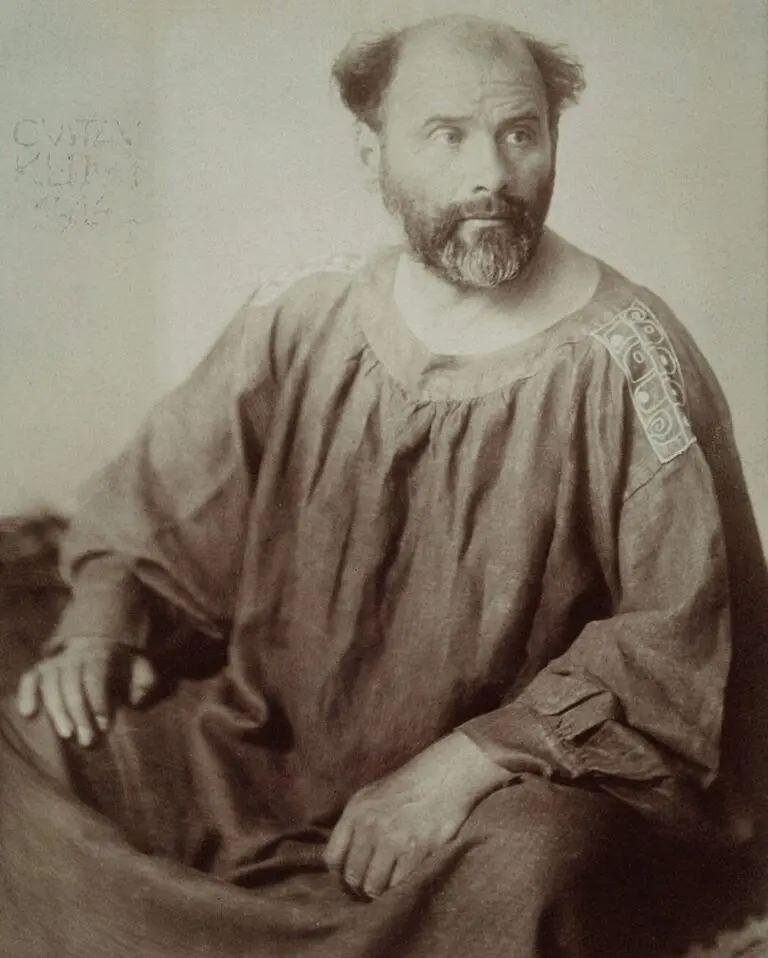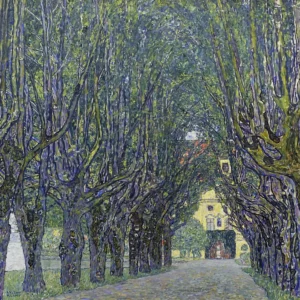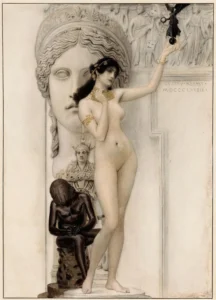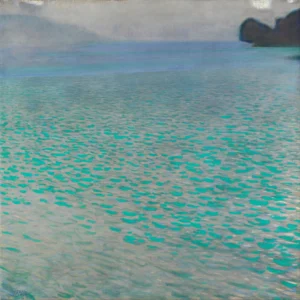Hygieia (1907)
In Hygieia, Gustav Klimt captures the essence of the Greek goddess of health through a mesmerizing depiction characterized by intricate patterns and luxurious colors. The painting features Hygieia with a snake, a tribute to healing, and a cup symbolizing forgetfulness. Created between 1900 and 1907, this important work faced scrutiny for its sensuality and was ultimately destroyed during the war, yet it continues to inspire admiration and study in the realms of art and mythology.
1900 - 1907
About the Artwork
Click on the image to enlarge
Did You Know
Liked what you see? Add it to your collection.
Enjoyed reading? Share it.
... continued
Creation and Context
Hygieia was created between 1900 and 1907 as part of Klimt's "Medicine" painting, which was the second in the series of ceiling paintings commissioned for the University of Vienna's Great Hall.
Depiction
In the painting, Hygieia, the Greek goddess of health, cleanliness, and hygiene, is depicted with a golden snake coiled around her arm, a traditional symbol of medicine and healing. She holds the cup of Lethe, a symbol associated with forgetfulness and the underworld. Hygieia is portrayed with an enigmatic and powerful presence, characterized by her haughty expression, inscrutable gaze, and ornate red and gold robe.
Style and Symbolism
The painting is executed in Klimt's distinctive Art Nouveau style, featuring elaborate jewelry, intricate patterns, and bold colors. The use of vibrant golds and reds, along with stylized forms, enhances the symbolic nature of the piece. The figure of Hygieia is central, emphasizing her importance in the mythological pantheon of health. The painting also includes other elements such as nude figures and a skeleton, symbolizing the cycle of life and death.
Criticism and Fate
Klimt's "Medicine" painting, including the depiction of Hygieia, was met with significant criticism from physicians and university officials who found the work too sensual and controversial. The painting was eventually seized by German forces in 1938 and was destroyed in May 1945 when retreating SS forces set fire to Schloss Immendorf, where the painting was being stored for protection.
Legacy
Despite its destruction, Hygieia remains one of Klimt's most celebrated works, known through preparatory sketches and a few surviving photographs. It continues to be studied and admired for its integration of classical themes with Klimt's unique ornamental style and its exploration of allegorical and mythological subject matter.








